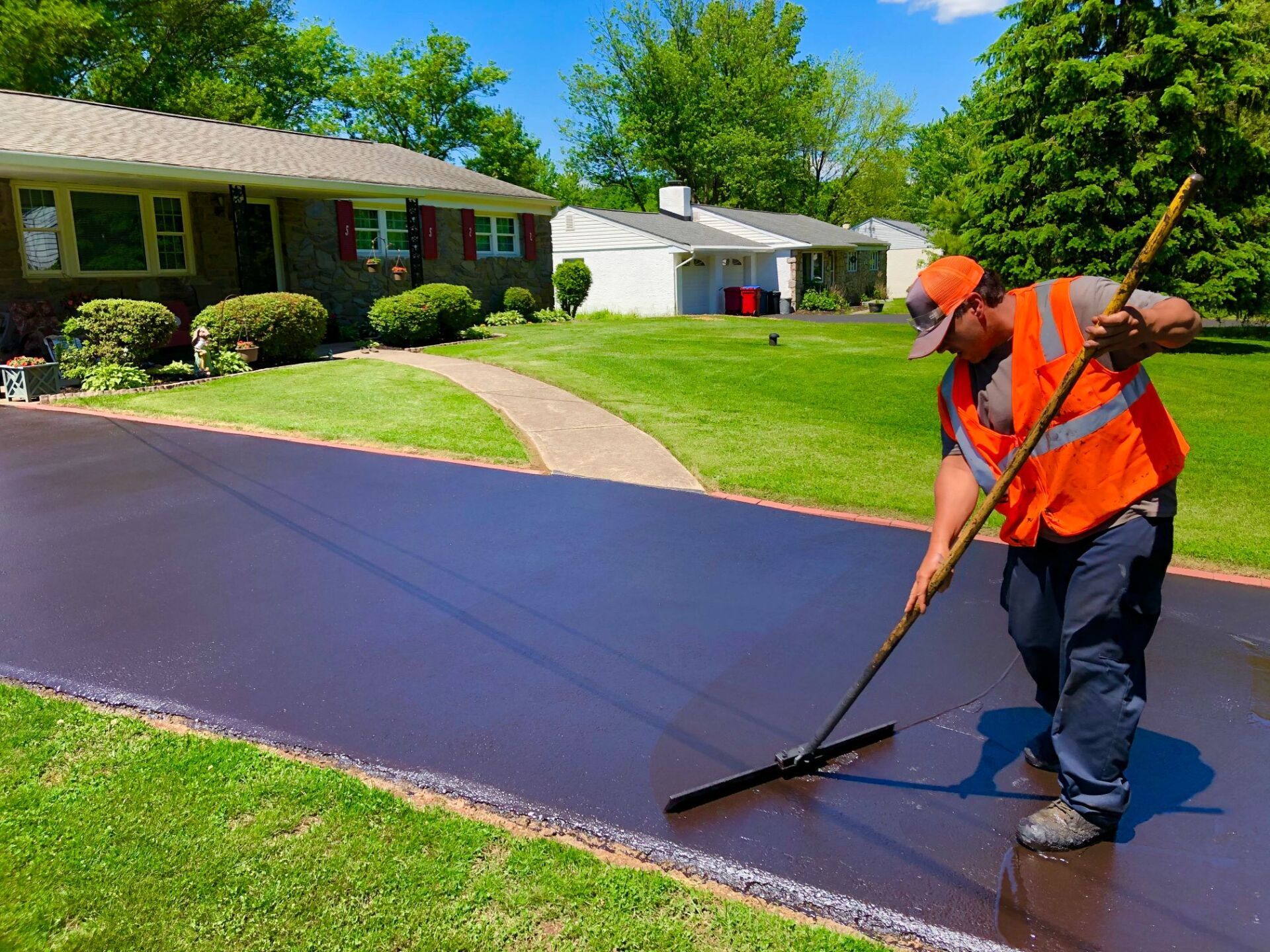Boost Safety And Security and Allure: Angled Car Park Solutions with Asphalt Sealing
Wiki Article
Warm Mix Asphalt: A Sustainable Solution for Pavement
Hot Mix Asphalt (HMA) has emerged as a leading sustainable choice for sidewalk solutions, offering a myriad of innovative innovations and environmental advantages. Its capability to reuse products and lower power usage provides an engaging instance for its fostering in road construction projects. The long-lasting performance and longevity of HMA make it a recommended choice for facilities advancement. As the need for environment-friendly construction practices grows, exploring the nuances of HMA's sustainability can offer beneficial understandings right into the future of pavement remedies.Ecological Benefits of Hot Mix Asphalt

In Addition, Warm Mix Asphalt assists to mitigate city warm island impacts. Its dark shade absorbs sunlight, minimizing the amount of warmth reflected back into the environment contrasted to lighter-colored pavements. This can lower ambient temperature levels in urban areas, lowering the need for air conditioning and ultimately lowering power intake.
In addition, Warm Mix Asphalt contributes to improved stormwater management. Its porous nature permits water to charge and penetrate the pavement groundwater materials, minimizing overflow and the danger of flooding. These environmental advantages make Warm Mix Asphalt a lasting selection for paving highways and roads.
Energy Performance in HMA Manufacturing
Is energy effectiveness a vital element in the production of Warm Mix Asphalt (HMA)? Power plays a substantial function in the production of HMA, impacting both price and environmental sustainability. One key facet of energy effectiveness in HMA production is the usage of warm mix asphalt (WMA) technologies.In addition, improvements in plant innovations have actually resulted in more energy-efficient HMA production processes. Modern plants are created with functions like recycled asphalt pavement (RAP) processing capacities, effective burner systems, and boosted insulation, all contributing to power financial savings. By enhancing energy use in HMA production, the sector can lower its carbon impact while preserving top notch pavement materials. Power effectiveness is, consequently, a crucial factor to consider in ensuring the sustainability of Hot Mix Asphalt production.
Recyclability of Hot Mix Asphalt
The recyclability of Hot Mix Asphalt (HMA) is a crucial aspect of its sustainability and long-term environmental effect. HMA is just one of one of the most recycled products in the USA, with over 100 million heaps of redeemed asphalt pavement (RAP) being reused yearly in brand-new sidewalk building and construction. Recycling HMA offers a number of ecological advantages, such as lowering the requirement for virgin products, decreasing power intake throughout manufacturing, and reducing the amount of waste sent to garbage dumps.The procedure of reusing HMA entails grating the existing sidewalk, crushing it into smaller sized pieces, and blending it with brand-new aggregate and asphalt binder to create a recycled mix. Overall, the recyclability of HMA plays a significant duty in advertising sustainable techniques within the sidewalk sector.

Long-Term Performance of HMA
Asphalt pavements demonstrate toughness and strength over an extensive duration, mirroring the lasting efficiency of Warm Mix Asphalt (HMA) The long life of HMA can be credited to its capacity to hold up against rush hour loads, harsh weather, and the image source effects of aging. Researches have actually revealed that well-designed and appropriately constructed HMA pavements can last for 20 years or even more with regular maintenance. The trick to maximizing the long-lasting efficiency of HMA hinges on making use of high-quality materials, adhering to ideal methods in building, and applying efficient maintenance strategies. Correct drain, regular examinations, and timely repair work are important for preserving the architectural stability of HMA sidewalks over time. Additionally, advancements in HMA technology, such as the usage of polymer-modified binders and cozy mix asphalt, have further improved the durability and long life of HMA sidewalks. By prioritizing high quality building and upkeep methods, HMA continues to verify itself as a cost-efficient and lasting solution for resilient pavement facilities.
HMA: Resilience and Sustainability
Showing both longevity and sustainability, Warm Mix Asphalt (HMA) has come to be a foundation in the construction of resilient pavement infrastructures - regrading. HMA's toughness originates from its ability to hold up against hefty loads, rough weather, and high traffic volumes, making it a trusted selection for roads, freeways, and airport paths. The composition of HMA, which usually consists of aggregates, binder, and filler, plays a crucial function in enhancing its longevity and resistance to damage
Moreover, HMA's sustainability hinges on its recyclability and energy-efficient production procedure. The capability to reuse recovered asphalt sidewalk navigate to this site (RAP) in new HMA blends lowers the demand for virgin materials and lessens the environmental effect of sidewalk construction and maintenance. In addition, the power efficiency of producing HMA depends on its reduced blending temperature levels compared to other pavement materials, causing lowered power consumption and greenhouse gas exhausts.
Verdict
In conclusion, warm mix asphalt (HMA) uses a sustainable solution for sidewalk with its environmentally pleasant qualities. HMA's recyclability, energy effectiveness in manufacturing, and long-term durability imp source make it an eco-friendly option for road building.
HMA is one of the most recycled products in the United States, with over 100 million lots of redeemed asphalt pavement (RAP) being recycled each year in brand-new sidewalk construction.The procedure of reusing HMA includes crushing the existing pavement, squashing it into smaller sized items, and blending it with new accumulation and asphalt binder to produce a recycled mix.Asphalt sidewalks show longevity and resilience over an extended duration, reflecting the lasting performance of Warm Mix Asphalt (HMA) In addition, innovations in HMA modern technology, such as the use of polymer-modified binders and cozy mix asphalt, have actually better enhanced the longevity and durability of HMA sidewalks. The ability to reuse redeemed asphalt pavement (RAP) in new HMA combinations reduces the demand for virgin products and minimizes the environmental effect of sidewalk building and construction and maintenance.
Report this wiki page